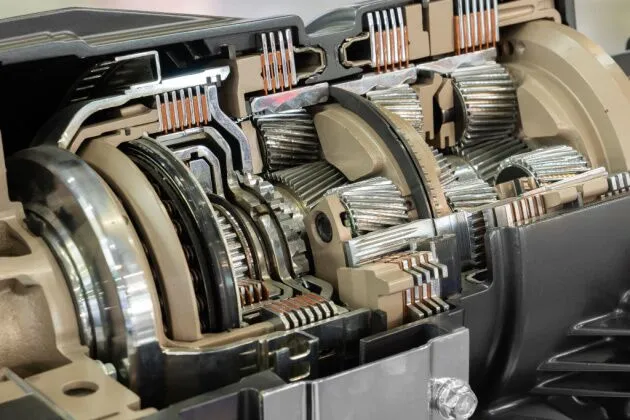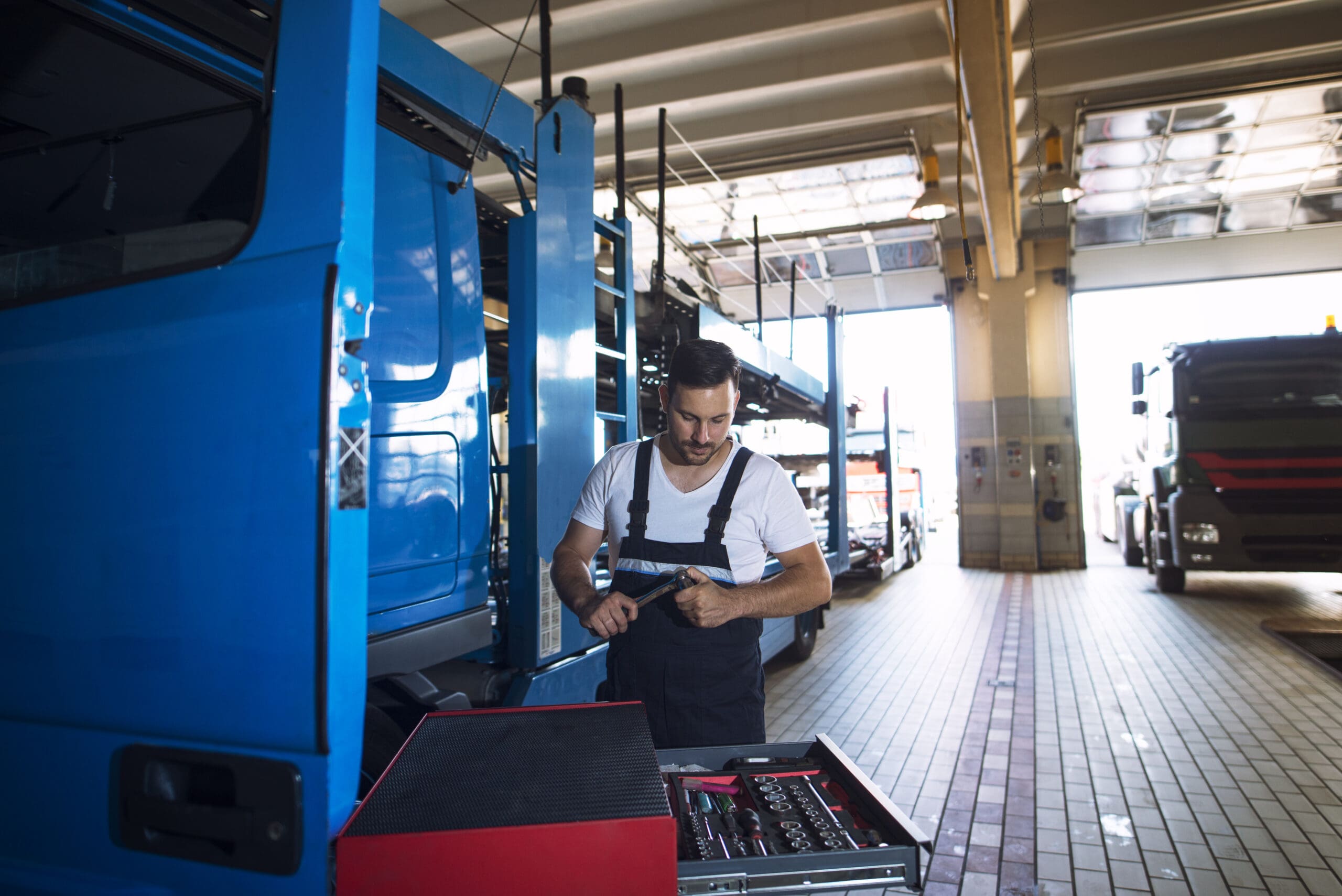Is Your Truck’s Clutch Slipping? Here’s When to Replace It
A truck’s clutch is one of those unsung heroes—working tirelessly, day in and day out, without much fanfare. But when it starts slipping, your truck is practically waving a red flag, screaming for attention. If you’ve noticed your clutch acting up, it’s time to figure out whether you can still get some miles out of it or if it’s time to replace it. This post will break it all down for you in plain terms, so let’s dive in.
What Does a Slipping Clutch Mean?
Let’s start with the basics. A slipping clutch means your clutch isn’t fully engaging with the flywheel. Instead of transferring all the power from the engine to the wheels, some of that energy is getting lost. You might notice it as a lack of acceleration, even though the engine is revving higher. In short, your truck isn’t putting all its horsepower to work.
How Do You Know If Your Clutch Is Slipping?
There are telltale signs that your clutch isn’t performing as it should. Recognizing these early can save you from being stranded—or worse, causing damage to other components.
1. Unusual RPM Behavior
One of the first signs is when the RPMs (revolutions per minute) climb higher than they should without your truck accelerating accordingly. It feels like your truck is “trying” to go faster, but something’s holding it back.
For example, imagine driving up a hill and your truck barely picking up speed when you hit the accelerator. That’s a classic symptom of a slipping clutch
2. A Burning Smell
Ever noticed a sharp, acrid smell, almost like burnt rubber, after heavy driving? That smell could be your clutch overheating. The friction material on the clutch disc might be wearing away, causing it to overheat and emit that telltale odor.
3. Trouble Shifting Gears
If shifting gears feels like a tug-of-war or you hear grinding noises, your clutch might not be disengaging properly. While this isn’t always due to slipping, it’s a sign that something isn’t right.
4. Poor Acceleration
Even on level ground, you might feel like your truck is sluggish, taking longer to reach higher speeds. This happens because the clutch isn’t effectively transferring power from the engine to the wheels.
5. Clutch Pedal Feels Different
Pay attention to how the clutch pedal feels under your foot. If it feels loose, too stiff, or engages very high off the floor, there’s likely an issue.
Why Does a Clutch Start Slipping?
Clutch slipping doesn’t happen overnight. It’s usually the result of wear and tear or specific issues that build up over time. Here are some common culprits:
1. Wear and Tear
A clutch disc, much like brake pads, has a friction material that wears out over time. The more you drive, especially in stop-and-go traffic or under heavy loads, the faster it wears down.
2. Overloading
Hauling loads that exceed your truck’s capacity puts extra strain on the clutch. Over time, this can accelerate wear, leading to slipping.
3. Riding the Clutch
Keeping your foot lightly on the clutch pedal (even unintentionally) can cause premature wear. It’s a habit many drivers don’t realize they have until it’s too late.
4. Oil or Fluid Contamination
Leaking oil or transmission fluid can get onto the clutch plate, reducing friction and causing it to slip.
When Should You Replace Your Clutch?
Deciding when to replace your clutch depends on a few factors. Here’s what you need to consider:
1. Severity of Slipping
If the clutch slips occasionally under heavy load but works fine the rest of the time, you might still have some life left in it. However, frequent slipping in normal driving conditions is a clear sign that replacement is imminent.
2. Mileage
Most clutches are made to endure 100,000–150,000 miles, depending on driving conditions and habits. If your truck is nearing or exceeding this range, it’s worth inspecting the clutch, even if it hasn’t shown obvious signs of trouble.
3. Maintenance History
If the clutch has been serviced or replaced before, its longevity might vary depending on the quality of the parts used and how the truck has been driven since.
What Happens If You Ignore a Slipping Clutch?
Ignoring a slipping clutch might save you money today, but it could cost you big down the line. Here’s why:
1. Increased Wear on Other Components
A slipping clutch puts extra strain on your transmission and engine, leading to potential damage to these costly components.
Example: A fleet operator ignored slipping clutches in two trucks, hoping to “get a few more miles out of them.” Both trucks ended up needing extensive transmission repairs, costing thousands more than if they’d replaced the clutches earlier.
2. Safety Risks
A failing clutch can leave you stranded in the middle of nowhere—or worse, fail completely while driving, increasing the risk of an accident.
3. Higher Repair Costs
The longer you wait, the worse the damage gets. What might start as a simple clutch replacement could turn into a flywheel replacement or even transmission damage.
How to Prolong Clutch Life
The good news? With a little care, you can extend the life of your clutch and save yourself some headaches.
1. Drive Smart
Avoid unnecessary clutch use. For example, don’t rest your foot on the clutch pedal, and use neutral at stop lights instead of holding the clutch in.
2. Keep Loads in Check
Stay within your truck’s recommended load capacity. Overloading doesn’t just stress the clutch—it wears out your entire drivetrain.
3. Regular Maintenance
Have your truck inspected regularly. A mechanic can catch early signs of clutch wear, fluid leaks, or other issues that could lead to slipping.
DIY Troubleshooting: Can You Check for Clutch Issues?
While some clutch problems require a mechanic’s expertise, there are a few things you can check yourself:
1. Clutch Pedal Test
With the engine off, press the clutch pedal a few times. Does it feel loose, stiff, or inconsistent? That could signal a problem.
2. Slip Test
On a flat road, put the truck in a high gear (like 4th or 5th) at a low speed. Then press the accelerator. If the engine revs but the truck doesn’t accelerate, your clutch is slipping.
3. Inspect for Leaks
Pop the hood and check around the transmission and clutch housing for signs of fluid leaks.
When to Call a Pro
While DIY checks can help you spot potential issues, diagnosing and repairing clutch problems is best left to professionals. A skilled mechanic can:
- Inspect the entire clutch system, including the flywheel and pressure plate.
- Identify whether the issue is due to wear, contamination, or another underlying problem.
- Ensure proper installation of a new clutch, if needed.
Cost of Clutch Replacement
Depending on your truck’s make and model and local labor costs, the price of replacing the clutch can vary significantly. On average:
- Light-duty trucks: $1,200–$2,000
- Heavy-duty trucks: $2,500–$4,500
While it’s not cheap, replacing a clutch is far more cost-effective than dealing with the consequences of ignoring the problem.
Final Thoughts
A slipping clutch isn’t something to take lightly. Whether you’re hauling goods across the country or running local deliveries, your truck’s clutch plays a critical role in keeping you moving. Recognizing the signs of a slipping clutch, addressing the issue promptly, and practicing good driving habits can spare you from unplanned downtime and expensive repairs.
How AP Truck Repair Can Help
At AP Truck Repair, we specialize in diagnosing and repairing clutch issues for all makes and models. No matter the issue—a slipping clutch, old parts, or a complete replacement—our skilled experts make sure your truck gets back on the road in a timely and secure manner. With years of expertise and a commitment to quality service, we’re here to keep your truck running smoothly. Let us handle the hard work while you focus on the road ahead!



